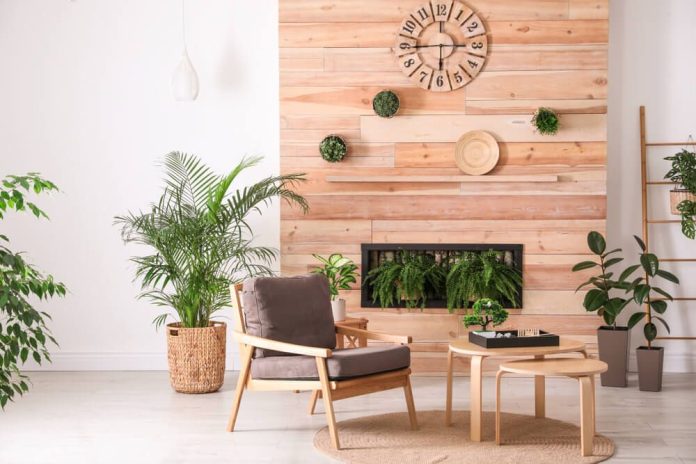Many of us desire a home that looks wonderfully in tune. Homeowners, decorating enthusiasts, or those passionate about homes and gardens can tap into simply being human to satisfy their needs. Indian Feng Shui, when brought into your designs, allows them to breathe and enlighten guests with a feel of balance and positive energy in their comfy homes.
The Role that the Bed Plays in Feng Shui
The bed is one of the most essential parts of any home. The focal point of Feng Shui is your bed, which goes way beyond just a piece of furniture; rather, it serves as the hub and heart where you sleep, meaning rejuvenation. Indian Feng Shui states that the place of the bed plays a critical role in your health, love life, and, most importantly, state.
Ideal Bed Placement
The location of the bed should be such that good energy is allowed to flow, as per Indian Feng Shui! Here are some key guidelines:
- Placement: The position of the bed could be in the southwest or south. It is placed in an earth element, which grounds our energetic stability.
- Headboard Position: Make sure that the head of your bed is on a full wall. This helps to support and provide security, which is important for a good night’s sleep.
- Prevent Swinging directly to the Doors: You ought not to place your bed in line with any of the doors. In Feng Shui, this is known as the “death position,” where energy travels too quickly over your body while you sleep.
- Symmetric space: There should be a balance between the headboards on each side of a busy bed. This creates equilibrium and collaboration in relationships. If you can, add identical nightstands on both sides to further the feel of this symmetry.
How to Include Feng Shui in Your Garden?
This is simply because gardens are an expanded part of your home, and if you incorporate some Indian principles from Feng Shui into the garden, what will happen is that it will complement the good overall energy in your space. Here’s how you can do it:
Choosing Suitable Plants for a Roof Terrace
Plants are seen as living beings who bring life and energy into your space. This is the interpretation of plants according to Indian Feng Shui. When choosing the plants for your garden, factor in:
- First, healthy plants: Make sure you always pick healthy plants. Do not plant with spiky or sharp edges; they tend to generate negative energy.
- Blooming Plants: Introducing blooming plants, especially colorful ones, will attract positive attention. In Indian Feng Shui, flowers like jasmine (mogra), marigold (genda phool), and hibiscus are regarded as the most auspicious.
Garden Layout
Feng Shui Garden Design Layout Here are some tips:
- Where is a Good Location for Your Garden East and North? The east or north side of your house are ideal places for an organic garden. They represent growth, prosperity, and new beginnings.
- Use water features: If a water feature like a fountain or small pond is put on the north-eastern side of the garden, it can increase energy flow. This represents the wealth aspect of Feng Shui using a water symbol.
- Consider Curved Pathways: Have curved pathways through your garden. Similarly, with curved paths, the energy would flow gently and smoothly, which helps create a calm and peaceful environment.
- Do not overcrowd. Overcrowding is easier than you think; avoid this by keeping in mind that gardens are still relatively closed spaces. Space is of high importance in Feng Shui to enable the free flow of energy.
Coordinating Your Indoor Luxury Home
Here are a few more ways to add Indian Feng Shui to your home interiors, apart from bed placement and garden center design:
- Colors: Make colours related to the elements you wish to strengthen. The presence of earth tones, i.e., beige and brown colors, promotes a groundedness, while blue and green hues usher in harmony.
- Mirrors, if brought in and placed in a strategic spot, would reflect light and energy into your house. To avoid this, no mirrors should be placed directly across the bed.
- Lighting: Make sure your home is well-lit. Natural light is always best, but take advantage of soft lighting to make the room warm and inviting.
Sharing Your Expertise
As you examine the principles of Indian Feng Shui at home, other styles will be discussed as well. By blogging, using social media, or delivering workshops in your community, you can pass along your expertise and help others create homes and gardens that are both inviting to the eye and also encouraged with positive Chi.
Conclusion Your home and garden can become sanctuaries of peace and tranquility with the incorporation of Indian Feng Shui principles. With proper bed placement, plant selection, and balanced interiors to circulate the universe’s cosmic energy, chi feeds a space that nurtures and heals your being. By practicing sharing what you know and love with others, along with the process of helping them create better living spaces while touching their hearts a little, not only is giving in to more harmony-filled houses but also taking part in a kinder world.













